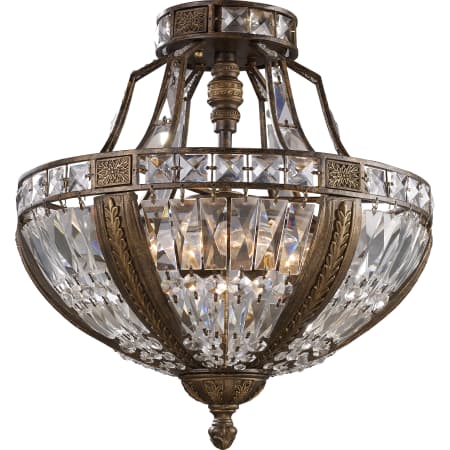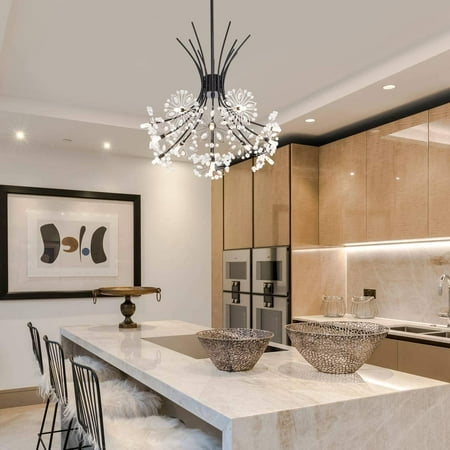Lighting is among the most vital aspects of your interior because it can, in addition to lighting a room it can transform the appearance of a area for better or worse. On the one hand, it can turn a drab room into a glossy-magazine-worthy space with the simple flick of a switch or, on the other, it can under- or over-illuminate resulting in headaches, tired eyes and lighting fatigue. Albert Hadley, a renowned American interior designer, once said, "Design is defined through light and shading, and the right lighting is crucial." This luxurious light guide will take you through the various types of lighting and offer expert advice on how to design the lighting of your home.
Light Types
Everyone must be aware there are two kinds of lighting.
1. Natural Light
Sunlight is the most natural source of light there is. It is mentally stimulating and completely free. However, it's difficult to manage. There will be different light levels according to where your home is located. The north gets more light than the south, and the east is more luminous. It also depends on which direction your home faces. The amount of sunlight that a room is exposed to will depend on when it is day and what time it is. Window coverings can limit the light that comes in. For rooms with a lack of sunlight interior designer Sara Cosgrove suggests that "sheers and window treatments are the best ways for controlling natural light, along with the application of mirrors." Mirrored furniture (like the Carina bedside cabinet above) can also be useful and can be used to store things too. You can control the amount of natural light in rooms that have lots of natural light by using lined drapes in heavier fabric. Glare can also be an issue. A room that is too bright may appear cold or flat. A window treatment that is able to be altered (such as venetian, louver roman blinds, slats or roman blinds) can control sunlight and block the appearance of glare. However, it won't impact the aesthetics of the window. Combustion light (i.e. Combustion light (i.e. candles and firelight), are atmospheric sources of natural lighting that shouldn't be missed. The addition to the fireplace makes the reception look even more appealing. Statuesque tapers placed in elegant candlesticks or candelabra are beautiful placed at either side of a mantlepiece, or on a formal dining set. For a more casual look the lanterns or hurricanes are an easy way to take in the warm glow of candlelight indoors or outdoors.

2. Artificial Light
To create a more layered space artificial lighting is best used. The most warm option for living spaces is a warm, rather than simple, clear. Artificial lighting can be used to improve the design of a room and create zones. It can also alter the perceived proportions. When planning your lighting plan, be sure to keep these five categories of lighting in your mind. Consider the location and how you plan to utilize the space. Then, you can use various lighting effects to achieve the look you desire.
What Are The Types Of Interior Light
There are five main types of lighting: mood, ambient, and task. There are numerous types of lighting that can be used in interior lighting. It is possible to fit some lights into a single type. It is essential to be aware of the differentiators between different kinds of lighting, so that you can create a successful plan.
A. General Lighting
General lighting is at the heart of any lighting system. It provides uniform illumination across the space and is used for practical purposes instead of aesthetic. General lighting should be uniform and direct. To allow for variations in light, a dimmer switch is recommended. The central lamp is the most popular source for general lighting. It could also be an important part of the overall design of the room. A luxurious chandelier or an artistic installation both make great visual statement in a room and can direct the eyes. The lighting fixtures must be complemented with other lighting. A central source of illumination, like chandeliers or an art installation, could cast harsh shadows and do not bring energy to the room. A lighting system that's easy to use is not ideal to create a warm and inviting space. Have a look at the top Modern Forms site.
B. Accent Lighting
Accent lighting, like task lighting and with a special function is lighting that has been specially designed to highlight a specific characteristic of a space. Accent lighting is a way to highlight artwork, sculptures or objects that are placed that are placed in cabinets or on pedestals. This helps to enhance art pieces and avoid them being lost in a dark room. Similar to task lighting because of its nature, accent lighting needs more lumens (the output of light output)--at minimum three times as much--and therefore demands a higher wattage. Ambient lighting is sometimes employed for accent lighting. Accent architectural lighting is often subtle, but can highlight the textures and define boundaries instead of a specific object. See the top LED wall lights info.
C. Ambient Lighting
Ambient lighting, which can be combined with general lighting, is the next stage of lighting. Both types share important characteristics--they're primarily functional and used to light a complete area. The only difference is how they reflect. Designer April Russell explains the difference by saying "General lighting is just that -- practical lighting that is suitable for both day and night use. Ambience lighting is linked to an adjustable dimming system that lets you set the proper lighting levels for every event. Ambience lighting is generally utilized to entertain. It can create drama. Take a look at eyeball or wall sconces, for example. lighting fixtures that illuminate the wall. Ambient lighting is another type of architectural lighting. It is employed to alter the appearance or size of spaces. This darkened room without the ambient lighting can feel very tight. Have a look at the top linear suspension lighting recommendations.

D. Task Lighting
The term"task lighting" is applied to any light source that is employed for a specific purpose, such as baking or reading. They require a higher wattage to be effective in nature. To avoid eye strain, try using these lights with ambient light. Reading and working areas (like this home office designed by Elicyon) are among the most obvious areas in need of task lighting. To read at night, adjustable reading lights placed near the headboard are a good selection. Mirror lighting can be used in bathrooms and personal grooming areas. Task lighting is essential for cooking. For lighting in the kitchen, there are many options. There are recessed downlights that can be positioned over the worktops, long pendant lights above the island and under-cabinet light. To make foot-flow pathways Task lighting can be used in hallways and rooms as well as in the form floor-level lights or risers on stairs. Have a look at the most popular Kuzco lighting Canada site.
E. Mood Lighting
General and ambient lighting can have an impact on the overall layout of a room, however mood lighting can help make it appear larger. A room is made more inviting by providing light sources to offset shadows caused by general lighting. It's also an important element of a room's style as it tends to be equally conscious of aesthetics as well as function--popular options being table lamps and floor lamps, such as in this Parisian living room design created by Jean-Louis Deniot. Solid side tables or consoles are the best options for table lamps. The wires may become difficult to hide. String wires through a discrete hole cut into the surface. Tape or staple them down a leg. It's best to keep your sockets for plugs near the place where your lamps are placed. Because mood lighting is usually the layer of lighting that is closest to the eye It is important to block any unwanted glare from bare bulbs with a filter. If the bulb you are using is evident from the ground it's important to shade your ambient or general lighting.
Final Words
CasaDiLuce Provides a variety of high-end lighting options. These tips above will assist you to select the right high-end lighting for your home. CasaDiLuce.ca offers a broad range of lighting options that can create the ideal atmosphere. Are you keen to know more? CasaDiLuce.ca is a website that can be used to purchase lighting in Toronto.


